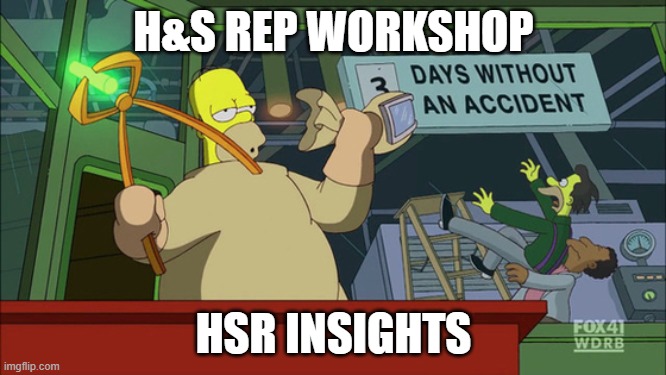HSR Insights Project

HSR Insights Project
In November, the Charter was engaged by WorkSafe NZ to gather data around Health and Safety Representatives in Christchurch. The purpose was to gather insights into the HSR role, which would enable WorkSafe to develop policies to better support HSR’s and reduce workplace harm. The feeling is that HSR’s are an under-utilised resource, and that there is a lack of consistency regarding their specific function and training.
The study considered five broad themes: Motivation, Function, Training, Support and Networks.
The goal was to understand needs, pain points, areas for opportunity, barriers, drivers/enablers, for each of the five areas. Then to determine for each key finding if this is global across all HSRs, or may be sector/industry/trade specific, or regional/local.
The Charter conducted two interactive workshops with 40 HSR’s, and then ten in depth interviews.
CHRISTCHURCH CONCLUSIONS
Motivation
- The main motivations for becoming an HSR are based around helping people and reducing workplace risk/harm, with 80% of the respondents mentioning one or both responses.
- 70% of respondents stated improved safety outcomes as a goal, with three main drivers of improving culture, improving communication, and leading change.
- Courage/leadership (60%) is what HSR perceive as the most needed skill for them to be effective in their role. Second to this was communication.
- The barriers were resistance to change, lack of “buy in”, lack of resourcing, and lack of management support.
Training
- The top two training areas that the HSR’s wanted were in leadership and the HSWA.
- Next was general health and safety training and professional development.
Function
- The top ranked response was meetings/communication.
- Second was identifying hazards and developing policy and procedure.
- The changes HSR’s have been able to affect were around improving the health and safety culture, improving the systems, and improving compliance.
Support
- 80% of respondents had been supported by training, and 60% were supported by their Health and Safety Committee.
- Less one third of HSR’s feel supported by either the organisational culture or management.
- The support HSR’s wanted from WorkSafe was training opportunities and direct safe contact.
Networks
- The greatest benefit of an HSR to an organisation was around sharing information and being the touchpoint for both staff and management.
- The two biggest barriers to communication are staff attitudes to health and safety and management buy-in.
NATIONAL PRELIMINARY FINDINGS
Motivation
- Motivations to become an HSR were more intrinsic (such as social or value-based) than extrinsic (career or opportunity based) Most HSRs are motivated to accept an HSR role through desire to help others.
- HSRs may be shoulder-tapped for the role because they possess qualities such as integrity, empathy, approachability, confidence in communicating.
- HSRs could be demotivated by poor feedback loops, seeing no positive changes, and old attitudes prevailing.
- HSRs could be motivated by feeling valued and by the perception that they can inform, influence, or drive meaningful change.
Barriers
- The time to undertake duties of the HSR role comes through repeatedly as a major barrier.
- Frontline leadership or middle management (e.g. supervisors, team leaders) can be a major barrier to the effectiveness of HSR’s.
Training
- The training market is fragmented with varying levels of quality and assurance monitoring.
- It is good for HSR’s to understand HSWA and their powers.
- The hierarchical layers immediately above them should be trained on HSWA and/or the powers and role of an HSR.
HSR needs:
- Procedural/Process
- Easy/simple reporting system and processes and a set time/location to do HSR work.
- Clarity of role definitions between HSR/Team Leader/H&S Manager/PCBU Leadership.
- To be trained on HSWA and enabled to apply training to work environment.
- Computer or ‘means’ to report and receive information.
- Social
- Shared understanding of the HSR role and visible and timely feedback loops.
- To be taken seriously, to be involved and approached.
- To be confident to communicate.
- Emotional
- To feel respected, to have mana, and be supported in their role by all levels of the PCBU.
- To see positive changes occur.
- To be acknowledged and feel prioritised.
- To have a sense of autonomy.
The next step for this study is to engage with the next level of management in organisations, (supervisors, Team Leaders) and to establish how they currently interact with HSR’s, and what opportunities exist to enhance this engagement.